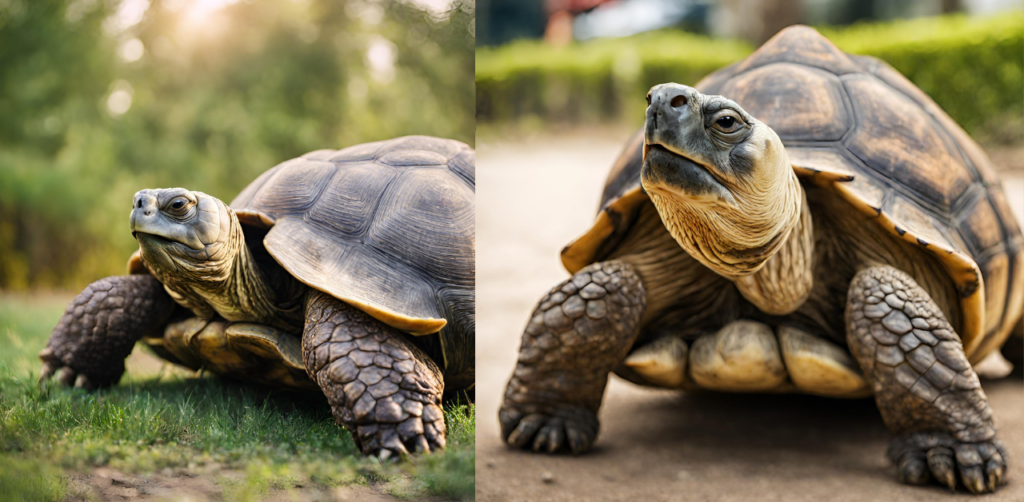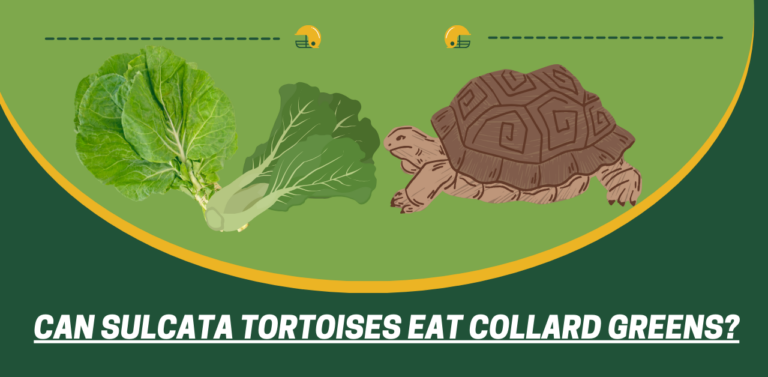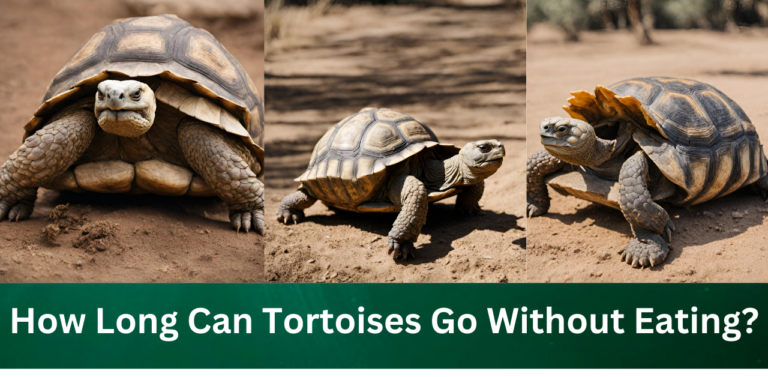Introduction
Tortoises are fascinating creatures known for their slow and deliberate movements, which may lead you to believe they’re incapable of getting into peculiar situations. However, even these resilient reptiles can find themselves in awkward positions, including being upside down. The question arises: How long can a tortoise be upside down, and what are the implications of such a predicament? In this article, we will explore the surprising abilities and adaptations of tortoises that help them survive when they find themselves topsy-turvy.
The Upside Down Challenge
Tortoises are not exactly gymnasts, and they lack the agility of other animals when it comes to righting themselves. In nature, a tortoise flipped onto its back or upside down faces several challenges, primarily related to mobility, thermoregulation, and predation risk. Here’s a closer look at these challenges and how tortoises deal with them:
- Mobility: Tortoises are not built for acrobatics, but they are remarkably persistent. When they find themselves upside down, they use their strong legs and necks to attempt to right themselves. This process can be slow and energy-draining, but with enough time and effort, many tortoises can eventually succeed.
- Thermoregulation: Turtles are ectothermic, and that implies they depend on their current circumstance to control their internal heat level. Being upside down can expose them to temperature extremes, including intense heat or cold ground. This can be life-threatening, and tortoises instinctively prioritize finding a stable position to maintain their ideal temperature range.
- Predation Risk: One of the most significant dangers of being upside down for a tortoise is the increased vulnerability to predators. Unable to retreat into their shells, inverted tortoises become easy targets for hungry animals. Their hard shells can offer some protection, but they are not foolproof.
Survival Strategies
Tortoises have evolved various strategies to survive when they find themselves upside down:
- Persistence: Tortoises are known for their determination. They will often keep attempting to right themselves until they succeed. This can take hours or even days, but they keep trying until they regain their footing.
- Shell Defense: Tortoises have sturdy shells that provide some protection against predators. When upside down, they can retract their limbs and head into their shells, making it more challenging for a predator to access vulnerable body parts.
- Assistance: In some cases, tortoises may receive assistance from other animals, including humans. If you come across an inverted tortoise, gently help it get back on its feet, being careful not to damage its shell or limbs.
Tortoise Upside Down in Water
A tortoise being upside down in the water is a particularly precarious situation, as it introduces an additional set of challenges and dangers for these slow-moving reptiles. Unlike land-dwelling tortoises, aquatic or semi-aquatic tortoises, such as some species of freshwater turtles, are more adapted to life in water. However, even they can find themselves in an upside-down position underwater. Let’s explore the unique challenges and adaptations of tortoises in this aquatic predicament:
- Buoyancy: Turtles and turtles have specific variations that assist them with controlling their lightness in water. Their shells, which are filled with air, act as flotation devices. Permitting them to go all over in the water section. When a tortoise ends up upside down in water, its buoyancy can be affected. Making it challenging for the animal to right itself.
- Limited Mobility: While aquatic tortoises are more agile in water than their terrestrial counterparts, being upside down still limits their mobility and swimming ability. Tortoises typically swim by using their legs to paddle, and an inverted position impedes their ability to do so effectively.
- Breathing Difficulties: Unlike fish, tortoises are air-breathing animals, and they require access to the surface to breathe. When upside down in the water, they may struggle to reach the surface to take in oxygen, which can lead to respiratory distress or even drowning if they cannot right themselves quickly.
- Predation Risk: Predators such as fish, birds, and larger aquatic animals are always on the lookout for potential prey. An upside-down tortoise in water becomes an easy target, as it cannot retreat into its shell or swim away to escape danger.
Survival Strategies:
Aquatic tortoises have evolved certain strategies to deal with being upside down in water:
- Buoyancy Control: Tortoises can control their buoyancy to some extent by adjusting the air content within their shells. They may expel air to become less buoyant and facilitate flipping themselves over. However, this process may take time and effort.
- Self-Righting: Some aquatic tortoises have evolved the ability to flip themselves over when upside down in water. This is achieved through coordinated movements of their limbs and head. Allowing them to regain their upright position.
- External Assistance: In some cases, aquatic tortoises may require external assistance to right themselves in water. Humans or other animals may encounter an upside-down tortoise and help it by gently turning it over to ensure it can breathe and continue swimming.

What happens when a tortoise turns upside down?
When a tortoise turns upside down, it can find itself in a vulnerable and challenging situation. Tortoises are not naturally designed for life on their backs. And being upside down can have various consequences:
- Mobility Impairment: Tortoises are slow-moving animals that rely on their legs to walk and navigate their environment. When flipped upside down, their legs are unable to support their weight properly. And their natural locomotion is hindered. This can make it hard for them to move, get away from expected dangers, or track down food and water.
- Righting Efforts: Tortoises possess a strong instinct to right themselves when they end up upside down. They will attempt to use their legs and neck to flip back onto their feet. This process can be slow and energy-consuming, and it may take some time for the tortoise to succeed.
- Stress and Discomfort: Being upside down can cause stress and discomfort for a tortoise. The unnatural position can lead to physical strain on their body, and the stress of being in a vulnerable position can negatively affect their overall well-being.
- Exposure to Predators: One of the most significant dangers of being upside down for a tortoise is increased vulnerability to predators. Tortoises are well-protected by their hard shells, but when upside down. They cannot retract their limbs and head into the shell, making them easier targets for predators.
- Environmental Challenges: Depending on the environment in which the tortoise is found. Being upside down can expose it to harsh conditions. For instance, if it’s a hot day, an inverted tortoise may be at risk of overheating due to prolonged exposure to the sun.
- Dehydration and Starvation: If a tortoise remains upside down for an extended period. They may struggle to access food and water, leading to dehydration and malnutrition.
When a tortoise turns upside down, it faces several challenges, including impaired mobility, stress, exposure to predators, and potential environmental hazards. However, their ability to do so can vary depending on the individual’s size, age, and health. It’s important for tortoises to be helped or allowed to right themselves. As soon as possible to minimize the risks associated with being in this unnatural position. If you come across an upside-down tortoise. Providing gentle assistance to help it flip back onto its feet can be a lifesaving act of kindness.
Conclusion: How Long Can a Tortoise Be Upside Down?
While tortoises may not be natural acrobats. They have developed remarkable survival strategies to cope with the challenges of being upside down. Persistence is the ability to retreat into their shells. And the occasional helping hand from a kind-hearted human can help them recover from this precarious situation. However, it’s essential to remember that being upside down for too long can have detrimental effects on their well-being. From thermoregulation issues to increased predation risk. If you encounter a flipped tortoise in the wild. Lending a hand can make a significant difference in its chances of survival. Ensuring these resilient reptiles continue to thrive in their natural habitats.
FAQs: How Long Can a Tortoise Be Upside Down?
The duration a tortoise can be upside down before it becomes a problem can vary depending on several factors. Including the species, age, health, and environmental conditions. Generally, it’s best to assist a tortoise in righting itself as soon as possible to minimize stress, dehydration, and predation risk.
When a tortoise is upside down, it may experience impaired mobility, stress, exposure to predators, and potential environmental challenges.
Yes, many tortoises have evolved the ability to right themselves when they find themselves upside down. They use their strong legs and neck to attempt to flip back onto their feet. However, the time it takes to do so can vary.
Tortoises typically use a combination of leg and neck movements to right themselves. They may also adjust the air content within their shells to control their buoyancy, which can aid in flipping back over.
If you come across an inverted tortoise, it’s generally a good idea to provide assistance. Gently help it flip back onto its feet, being careful not to damage its shell or limbs. This can greatly increase its chances of survival.






